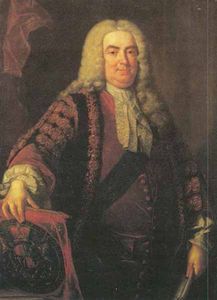PPATH - Prime Path

The ministers of the cabinet were quite upset by the
message from the Chief of Security stating that they
would all have to change the four-digit room numbers
on their offices.
— It is a matter of security to change such things
every now and then, to keep the enemy in the dark.
— But look, I have chosen my number 1033 for good
reasons. I am the Prime minister, you know!
— I know, so therefore your new number 8179 is also
a prime. You will just have to paste four new
digits over the four old ones on your office door.
— No, it's not that simple. Suppose that I change the
first digit to an 8, then the number will read 8033
which is not a prime!
— I see, being the prime minister you cannot stand
having a non-prime number on your door even for a
few seconds.
— Correct! So I must invent a scheme for going from
1033 to 8179 by a path of prime numbers where
only one digit is changed from one prime to the
next prime.
Now, the minister of finance, who had been eavesdropping,
intervened.
— No unnecessary expenditure, please! I happen to
know that the price of a digit is one pound.
— Hmm, in that case I need a computer program to
minimize the cost. You don't know some very cheap
software gurus, do you?
— In fact, I do. You see, there is this programming
contest going on...
Help the prime minister to find the cheapest prime path between any two given four-digit primes! The first digit must be nonzero, of course. Here is a solution in the case above.
1033
1733
3733
3739
3779
8779
8179
The cost of this solution is 6 pounds. Note that the digit 1
which got pasted over in step 2 can not be reused in the last step
– a new 1 must be purchased.
Input
One line with a positive number: the number of test cases (at most 100). Then for each test case, one line with two numbers separated by a blank. Both numbers are four-digit primes (without leading zeros).
Output
One line for each case, either with a number stating the minimal cost or containing the word Impossible.
Example
Input: 3 1033 8179 1373 8017 1033 1033 Output: 6 7 0
hide comments
|
|
eti goel:
2014-10-12 21:18:42
my first graph problem..:P :P
|
|
|
sg:
2014-09-23 17:01:16
nice one!! |
|
|
Kartik Khare:
2014-08-23 13:09:39
AC in first go..Used STL and graphs Last edit: 2014-08-23 13:09:51 |
|
|
Ajay Prasadh:
2014-08-12 07:45:31
Excellent question :D |
|
|
|RAMSDEN|:
2014-08-02 11:07:42
Nice problem:)
|
|
|
Kennethnlogn:
2014-07-23 16:04:40
MY SOLUTION SHOWS TLE ON MY SUBMISSION HOWEVER WHEN I SUBMITTED ON UVA AND GOT AC. WHAT COULD BE THE PROBLEM HERE?
|
|
|
Somesh Maurya™:
2014-07-02 08:05:54
Go for LUCKYNUM And ONEZERO after this... |
|
|
NARUTO (y):
2014-06-15 22:16:17
@Kashish Mittal for 1373 8017 ans is 7
|
|
|
kancha:
2014-06-10 07:37:53
ans of 2nd test case is 5 .. ?
|
|
|
(Tjandra Satria Gunawan)(曾毅昆):
2014-05-09 12:04:28
Small Graph :)
|
| Added by: | overwise |
| Date: | 2007-10-02 |
| Time limit: | 2s |
| Source limit: | 50000B |
| Memory limit: | 1536MB |
| Cluster: | Cube (Intel G860) |
| Languages: | All except: ERL JS-RHINO NODEJS PERL6 VB.NET |
| Resource: | ACM ICPC NWERC 2006 |

 RSS
RSS